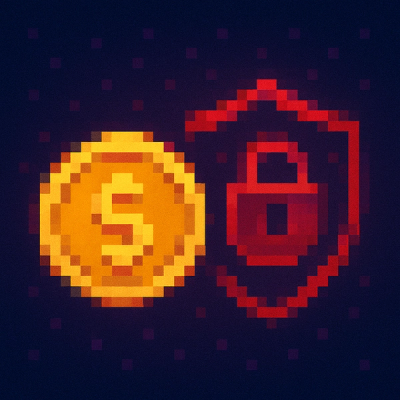
Security News
Security Community Slams MIT-linked Report Claiming AI Powers 80% of Ransomware
Experts push back on new claims about AI-driven ransomware, warning that hype and sponsored research are distorting how the threat is understood.
zope.html
Advanced tools
This package contains support for editing HTML and XHTML inside a web page using the FCKeditor as a widget. This is a fairly simple application of FCKeditor, and simply instantiates a pre-configured editor for each widget. There are no options to control the editors individually.
This package contains support for editing HTML and XHTML inside a web page using the FCKeditor as a widget. This is a fairly simple application of FCKeditor, and simply instantiates a pre-configured editor for each widget. There are no options to control the editors individually.
In creating this, we ran into some limitations of the editor that are worth being aware of. Noting these as limitations does not mean that other editors do any better; what's available seems to be a mixed bag.
The editor only deals with what can be contained inside a element; anything that goes outside that, including the and
tags, get lost or damaged. If there's any way to configure FCKeditor to deal with such material, it isn't documented.There's no real control of the HTML source; whitespace is not preserved as a programmer would expect. That's acceptable in many use cases, but not all. Applications should avoid using this widget if the original whitespace must be maintained.
These are problems with the widget used to integrate FCKeditor rather than problems with FCKeditor itself. These should be dealt with.
The width of the editor is hardcoded; this should be either configurable or the editor should stretch to fill the available space. The sample uses of the FCKeditor don't seem to exhibit this problem, so it can be better than it is.
The height of the editor should be configurable in a way similar to the configuration of the basic textarea widget.
These ideas might be interesting to pursue, but there are no specific plans to do so at this time:
Categorize the applications of the editor and provide alternate toolbar configurations for those applications. There's a lot of configurability in the editor itself, so it can be made to do different things.
Add support for some of the other fancy client-side HTML editors, and allow a user preference to select which to use for what applications, including the option of disabling the GUI editors when detailed control over the HTML is needed (or for luddite users who don't like the GUI editors).
XINHA (http://xinha.python-hosting.com/) appears to be an interesting option as well, and may be more usable for applications that want more than editing of small HTML fragments, especially if the user is fairly HTML-savvy.
HTMLArea (http://www.dynarch.com/projects/htmlarea/) may become interesting at some point, but a rough reading at this time indicates that XINHA may be a more reasonable route.
The zope.html package provides additional views on files containing
HTML and XHTML data that allow editing the files over the web. The
files may contain either complete documents or fragments that may be
composed into larger documents. Preview views are also provided.
The editing and preview views rely on getting supplemental information
about the file being edited using the IEditableHtmlInformation
adapter for the file. That adapter uses annotations on the content
object to store information that needs to be persisted.
The IEditableHtmlInformation interface is very simple; there's only
one field defined, and it's a simple boolean value: whether the file
should be treated as a fragment or not. Let's create a simple content
object that we can use for testing::
import zope.file.file import zope.interface import zope.annotation
class File(zope.file.file.File): ... zope.interface.implements( ... zope.annotation.IAttributeAnnotatable) ... ... def init(self, text=None): ... super(File, self).init("text/html", {"charset": "utf-8"}) ... f = self.open("w") ... f.write(text) ... f.close()
Let's create a file and the corresponding IEditableHtmlInformation
object::
import zope.html.docinfo
file = File("This is a fragment.") info = zope.html.docinfo.EditableHtmlInformation(file)
We can now check that the initial value of the isFragment attribute
is computed reasonably::
info.isFragment True
The user can cause the isFragment flag to be toggled from the UI, so
it should remember the current state of the flag::
info.isFragment = False info.isFragment False
A new instance of the IEditableHtmlInformation instance should also remember the last value of the setting::
zope.html.docinfo.EditableHtmlInformation(file).isFragment False
The widget included in this package is a simple application of the FCKeditor control. It is only expected to work for fragments, not for arbitrary documents. Let's create a field and a widget::
from zope.html import field from zope.html import widget from zope.publisher import browser
class Context(object): ... sample = u""
myfield = field.XhtmlFragment( ... name="sample", ... title=u"Sample Field", ... ).bind(Context())
request = browser.TestRequest() mywidget = widget.FckeditorWidget(myfield, request) mywidget.setPrefix("form")
mywidget.configurationPath = "/myconfig.js" mywidget.editorWidth = 360 mywidget.editorHeight = 200 mywidget.toolbarConfiguration = "mytoolbars"
print mywidget() <textarea...> <script... "form.sample", 360, 200, "mytoolbars"); ...Config["CustomConfigurationsPath"] = "/myconfig.js"; ...
We should also test the CkeditorWidget.
ckwidget = widget.CkeditorWidget(myfield, request) ckwidget.configurationPath = "/myconfig.js" ckwidget.editorHeight = 200
The "fckVersion" attribute holds the version of CKEditor library.
ckwidget.fckVersion '3.6.2'
print ckwidget() <textarea...> <script... ...height: 200... ...customConfig : "/myconfig.js"...
Let's start by uploading some HTML to create a file object::
import StringIO sio = StringIO.StringIO("This is a fragment." ... " There's one 8-bit Latin-1 character: \xd8.")
from zope.testbrowser.testing import Browser browser = Browser() browser.addHeader("Authorization", "Basic user:userpw") browser.addHeader("Accept-Language", "en-US") browser.open("http://localhost/@@+/zope.file.File")
ctrl = browser.getControl(name="form.data") ctrl.mech_control.add_file(sio, "text/html", "sample.html") browser.getControl("Add").click()
We can see that the MIME handlers have marked this as HTML content::
import zope.mimetype.types file = getRootFolder()["sample.html"] zope.mimetype.types.IContentTypeTextHtml.providedBy(file) True
The "Edit" view can be used to check and modify the "Is fragment?" field, which is stored by the views in an annotation on the object. The particular fragment we uploaded here should be see as a fragment by default::
browser.getLink("sample.html").click() browser.getLink("Edit").click()
browser.open("http://localhost/sample.html/@@htmledit.html") ctrl = browser.getControl(name="form.isFragment") ctrl.value True
The setting can be toggle by unchecking the checkbox and clicking "Save"::
ctrl.value = False browser.getControl("Save").click() ctrl = browser.getControl(name="form.isFragment") ctrl.value False
The edit view also allows editing of the HTML content if the document can be decoded. If the encoding of the document is not known, the document cannot be edited by the user is prompted to select an encoding that should be used.
Our example document does not have a specified encoding, so we expect the form to indicate that the encoded is needed, and to allow the user to select and encoding. Let's reload the form to get rid of the "Updated..." message so we can see what the user is told::
browser.getLink("Edit").click()
print browser.contents <...Can't decode text for editing; please specify the document encoding...
ctrl = browser.getControl(name="form.encoding") ctrl.value ['']
The user can then select an encoding::
ctrl.value = ["utf-8"] browser.getControl("Save").click()
Since we just selected an encoding that doesn't work with the Latin-1 data we uploaded for the file, we're told that that encoding is not acceptable::
print browser.contents <...Selected encoding cannot decode document...
We need to select an encoding that actually makes sense for the data that we've uploaded::
ctrl = browser.getControl(name="form.encoding") ctrl.value = ["iso-8859-1"] browser.getControl("Save").click()
Now that the encoding has been saved, the document can be encoded and edited, and the encoding selection will no longer be available on the form::
browser.getControl(name="form.encoding") Traceback (most recent call last): ... LookupError: name 'form.encoding'...
Since our selected encoding does not support all Unicode characters, there is an option available to allow re-encoding of the document if the content being saved after editing cannot be encoded in the original encoding of the document. The value of this option defaults to False since the user needs to be aware that the document encoding may be modified::
browser.getControl(name="form.reencode").value False
If we edit the text such that characters are included that cannot be encoded in the current encoding and try to save our changes without allowing re-encoding, we see a notification that the document can't be encoded in the original encoding and that re-encoding is needed::
ctrl = browser.getControl(name="form.text") ctrl.value = u"\u3060\u3051\u306e\u30b5\u30a4\u30c8".encode("utf-8")
browser.getControl("Save").click()
print browser.contents <...Can't encode text in current encoding...
At this point, we can select the "Re-encode" option to allow the text to be saved in an encoding other than the original; this would allow us to save any text::
browser.getControl(name="form.reencode").value = True browser.getControl("Save").click()
print browser.contents <...Updated on ...
If we now take a look at the "Content Type" view for the file, we see that the encoding has been updated to UTF-8::
browser.getLink("Content Type").click()
browser.getControl(name="form.encoding").value ['utf-8']
doctest module instead of deprecated
zope.testing.doctest.Use CKEditor 3.2.1
Added configuration to use un-minified version of CKEditor when using dev mode.
Fixed import that caused test failures.
Use FCKeditor 2.6.4.1
Remove _samples directory and erect a barrier to its resurrection
Use FCKeditor 2.6
Use versioned directories for javascript to cache-bust
Package data update.
Updated code to work with packages in Zope 3.4 release.
FAQs
HTML and XHTML Editing Support
We found that zope.html demonstrated a healthy version release cadence and project activity because the last version was released less than a year ago. It has 29 open source maintainers collaborating on the project.
Did you know?

Socket for GitHub automatically highlights issues in each pull request and monitors the health of all your open source dependencies. Discover the contents of your packages and block harmful activity before you install or update your dependencies.

Security News
Experts push back on new claims about AI-driven ransomware, warning that hype and sponsored research are distorting how the threat is understood.

Security News
Ruby's creator Matz assumes control of RubyGems and Bundler repositories while former maintainers agree to step back and transfer all rights to end the dispute.

Research
/Security News
Socket researchers found 10 typosquatted npm packages that auto-run on install, show fake CAPTCHAs, fingerprint by IP, and deploy a credential stealer.